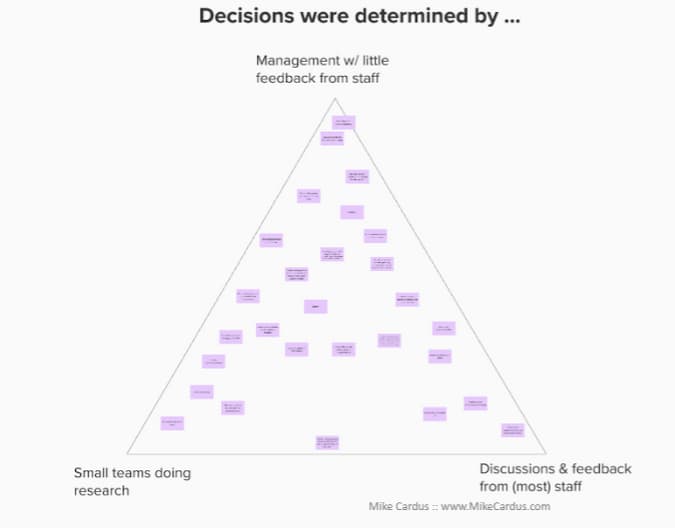How to Measure & Improve the Employee Experience

Start Making More Calls Today
Not sure which solution would be the best fit for your needs? We can work with you to find a solution that’s right for your business.
get a free quoteYou know what you think about your employees, but do you know what your employees think about you?
Mike Cardus, organizational development expert, walks us through how to measure & improve the employee experience at any organization, step-by-step.
Employee Experience vs. Employee Engagement [9:05]
Before learning how to measure the employee experience, we first need to understand how employee experience differs from employee engagement.
Employee engagement describes how engaged an employee is with their work. It encompasses how they view their work.
On the other hand, employee experience describes how the employee experiences the workplace from the beginning to end. It encompasses the entire journey of the employee at your organization, not just how they view their work.
Gallup defines the employee experience as the following:
“… the journey an employee takes with your organization. It includes every interaction that happens along the employee life cycle, plus the experiences that involve an employee’s role, workspace, manager, and wellbeing.”
Employee Experience is a Complex System
In the more general sense, we can also refer to the employee experience as a complex system. A complex system is anything that we have to consistently monitor and receive feedback on to fully understand. In a complex system, there are no existing goals or objectives to work towards. What makes up a positive employee experience at your company will continually change, whether you want it to or not. That is why we will never be “finished” improving it.
Because the employee experience is a complex system, Mike says that according to Cognitive-Edge Dave Snowden, we should be able & willing to use the following guidelines:
- Start out with a general sense of direction, but without specific targets.
- Be comfortable with uncertainty.
- Obtain real time feedback with the flexibility to respond & change quickly.
- Understand our underlying theories which must act as an enabling constraint on our actions.
- Be ethically responsible for the unintended consequences of any intervention.
What Does the Employee Journey Look Like? [11:00]
The following process pulled from Culture Amp demonstrates what the ideal employee journey looks like. Keep in mind that employees’ can bounce out at any point during the journey due to a negative experience with your company. In order to make sense of the employee experience, we need to consider each point on the employee journey.
1. Attract
An employee’s journey begins before they are hired. Current & past employees are likely to share their positive and negative experiences working for your company. That word-of-mouth will impact others’ desire to work for your company.
2. Onboard
The next step in the employee journey is onboarding. This describes the experience of new-hires during their first few months with the company.
3. Engage
The engage portion of the employee journey describes your employees’ experience doing actual work for your company.
4. Develop
This stage of the employee journey describes the experience your employees have in developing their skill sets at your company.
5. Perform
Perform describes the experience employees have in completing their work and how their results are evaluated.
6. Exit
The exit stage describes the experience employees have when their tenure ends at your company. This stage can be induced by a multitude of reasons including, but not limited to retirement or finding a new job.
7. Alumni
The employee journey does not stop when an employee exits! The last point in the journey is the Alumni stage. This is where a past employee shares their positive or negative experience at your company through word-of-mouth. This brings us all the way back to the first point in the journey, the Attract stage.
Measure the Employee Experience [20:05]
Step 1: Ask a Non-Hypothetical Question
So many times, companies make the mistake of asking hypothetical questions to measure the employee experience. Mike explains that a hypothetical question is one that is used to try and prove a point or preconceived notion. Questions that require employees to answer with a rating on a scale are considered a hypothetical questions.
The biggest issue with these types of questions is that the employee can easily see what your desired answer from them is – the highest number on the scale. Because they are aware of this, they are less likely to respond truthfully. “They can game the system,” Mike says. If employees can game the system, we won’t be able to accurately measure the employee experience.
To measure the employee experience, you must first gather your employees’ experiences in their own voice. The way you gather their experiences in their voice is by asking what Mike calls a “non-hypothetical” question. A non-hypothetical question requires the employee to answer/respond in their own words or “voice.”
Here’s an example question you can ask your employees to get started:
“A close friend or family member wants to work here; what is a recent experience that you would share with them that lets them know what it is like to work here?”
Step 2: Ask Employees to Self-Qualify the Emotional Tone of Their Response
After you’ve asked a non-hypothetical question, ask your employees to self-qualify the emotional tone of their response.
One way you can word this is as follows:
“My experience above is …”
〇 Very Positive
〇 Positive
〇 Neutral
〇 Negative
〇 Very Negative
Your employees’ responses to this will allow you to create clusters of the experiences they shared in their own voice. From there, you can measure whether the majority of your employees experiences are negative, neutral or positive in tonality. You’ll be able to find patterns that give you a better understanding of the true employee experience at your company.
Step 3: Map Out the Responses
Create a Word Cloud For Each Tonality
Next, Mike suggests creating a word cloud for each tonality (positive, negative & neutral) that includes each of the responses that employees self-qualified as being that tonality. When you’re done creating these you should have a separate word cloud based on the responses for each tone. This will help you identify what is and isn’t contributing to a positive employee experience at your company.
Create Sense-Making Triangles
Mike also suggests copy & pasting all of your employees’ responses to your non-hypothetical question in Mural, a digital workspace for visual collaboration. Each response will go in the area of the triangle that makes the most sense. When the triangle is complete, Mike suggests considering which of the employee experiences in the triangle you want to amplify (do more of) and which ones you want to dampen (do less of).
Example Triangle #1: What Were People Motivated By?

Example Triangle #2: What Were Decisions Determined By?

Congrats! You’ve successfully measured the employee experience at your organization. It’s not enough to just measure it though; you need to actually improve it.
Improve the Employee Experience [34:30]
Once you’ve measured the employee experience at your organization, you’ll want to put a plan in place to improve it. Mike suggests using the questions below to guide your plan.
- What is our goal and what will it look like when our team has accomplished it?
- How do we see this helping with the unique needs of our customers?
- Where will we begin? What will be the first visible steps?
- With whom do we see ourselves collaborating & communicating with to help make this happen?
- When? What time frame for these actions should we set up?
- How will we be communicating our successes?
About The Speaker
About The Author
Alex Villafranca
Alex is the CEO, co-founder and Head of Revenue at Arbeit, a better outbound communication software that makes businesses more profitable.